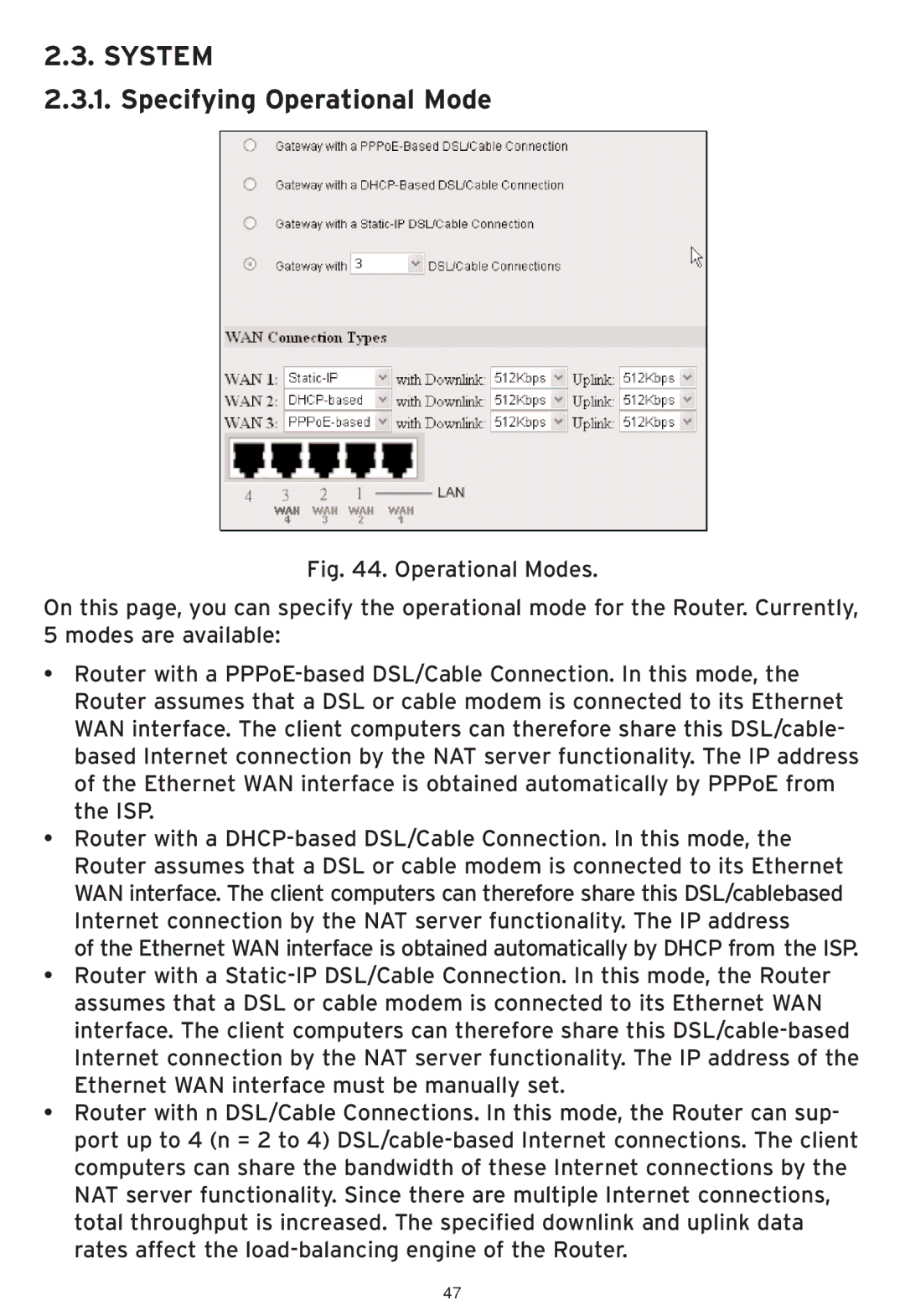
2.3. SYSTEM
2.3.1. Specifying Operational Mode
Fig. 44. Operational Modes.
On this page, you can specify the operational mode for the Router. Currently,
5 modes are available:
•Router with a PPPoE-based DSL/Cable Connection. In this mode, the Router assumes that a DSL or cable modem is connected to its Ethernet WAN interface. The client computers can therefore share this DSL/cable- based Internet connection by the NAT server functionality. The IP address of the Ethernet WAN interface is obtained automatically by PPPoE from the ISP.
•Router with a DHCP-based DSL/Cable Connection. In this mode, the Router assumes that a DSL or cable modem is connected to its Ethernet WAN interface. The client computers can therefore share this DSL/cablebased Internet connection by the NAT server functionality. The IP address
of the Ethernet WAN interface is obtained automatically by DHCP from the ISP.
•Router with a Static-IP DSL/Cable Connection. In this mode, the Router assumes that a DSL or cable modem is connected to its Ethernet WAN interface. The client computers can therefore share this DSL/cable-based Internet connection by the NAT server functionality. The IP address of the Ethernet WAN interface must be manually set.
•Router with n DSL/Cable Connections. In this mode, the Router can sup- port up to 4 (n = 2 to 4) DSL/cable-based Internet connections. The client computers can share the bandwidth of these Internet connections by the NAT server functionality. Since there are multiple Internet connections, total throughput is increased. The specified downlink and uplink data rates affect the load-balancing engine of the Router.
47
